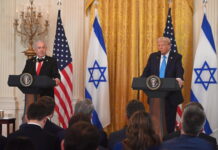The atrocious attack by Somali al-Qaeda affiliate al-Shabab on the Westgate shopping mall in Nairobi points to a renewed emphasis on internationalizing jihad, and a closer co-operation between the various “branches” and “al-Qaeda central” led by Ayman al-Zawahiri, writes Abdelbari Atwan.
While al-Qaeda remains horizontal in structure, with its many branches and affiliates largely maintaining their autonomy, al-Zawahiri appears to have become more assertive since the Arab Spring afforded the organization so many new opportunities.
In August the CIA intercepted a conference call between Zawahiri and 22 leaders from affiliates in Africa, the Middle East, Southwest and Southeast Asia – an event which occasioned the immediate closure of several US embassies around the world.
During the intercepted call, a planned attack was referred to and al-Zawahiri confirmed that a team, or teams, were already “in place.” Whether or not this was the Westgate massacre, the call demonstrated the central involvement of al-Zawahiri in affiliated groups’ planning and stategy.
Zawahiri
The Mall atrocity bears remarkable similarities to the 2008 Mumbai attacks which were planned in Pakistan (where al-Zawahiri is based) and carried out by al-Qaeda affiliate Lashkar-e-Toiba.
During the Westgate attack, an al-Shabaab commander speaking from Somalia told al-Jazeera that the attackers were taking orders from al-Qaeda: “They are our leaders and we are all engaged in a single conflict against the international Christian crusade.”
Subscribe to our newsletter and stay updated on the latest news and updates from around the Muslim world!

The re-emergence of al-Zawahiri should ring alarm bells. He was always more hardline than Osama bin Laden and it was al-Zawahiri who internationalized al-Qaeda with the 1998 “World Islamic Front for Jihad against Jews and Crusaders” which brought together several like-minded jihadist groups in a coalition under the al-Qaeda umbrella.
Al-Zawahiri is a highly intelligent strategist who has been carefully building on the opportunities offered by the Arab Spring.
Syria’s al-Nusra Front pledged their allegiance to al-Zawahiri in April this year, subsequently merging with al-Qaeda’s powerful Iraqi wing, the Islamic State of Iraq. The extremists’ goal here is to establish an Islamic Emirate across Iraq and Syria, consolidating strategic control over the heart of the Middle East. Jane’s Defence and Security warned in their latest issue that at least half of the 100,000 rebel fighters in Syria are either members of al-Qaeda or hardline Islamic extremists.
Al-Zawahiri has a willing accomplice in al-Shabab’s notoriously ruthless current emir Ahmed Adbi Godane (aka Mukhtar Abu al-Zubeyr). Godane fought with al-Qaeda in Afghanistan, and sought a merger with the group from 2008 onwards.
Al-Shabab
Al-Shabab was established in 2006 when US-backed Ethiopian troops swarmed into Somalia to topple the Islamic Courts Union (ICU) which had ruled the country for a few short months.
Al-Shabab was originally the youth wing of the ICU and the group quickly succeeded in gaining control over large swathes of central and southern Somalia.

The leadership was soon divided between the hardliners who wanted to join the wider, global, jihad and merge with al-Qaeda (led by Godane) and a more moderate wing, who saw their struggle as local, led by al-Afghani and Sheikh Hassan Dahir Aweys.
This difference in opinion was reflected in al-Qaeda central where, in 2010, Osama bin Laden cautioned against al-Shabab officially merging with al-Qaeda telling Godane that that enemies would “escalate their anger and mobilize against you: this is what happened to the brothers in Iraq or Algeria.”
Al-Zawahiri took the opposite point of view and urged bin Laden to reconsider. “I see it to be very essential for al Qaeda to confirm and declare its linkage with its branches,” he said.
When al-Shabab announced its merger with al-Qaeda in February 2012 it was in a video featuring al-Zawahiri and Godane.
Al-Shabaab became increasingly dominated by its radical tendency and lost much of the popular support it had previously enjoyed with Taliban-style punishments, including the horrific stoning to death of a 13 year-old rape victim.
With the advent of AMISOM troops in 2010, al-Shabab lost its Mogadishu stronghold. It also lost much of its domestic revenue with the international clamp-down on piracy which al-Shabaab had been taxing.
Global jihad
It is in the context of these problems that the group’s radical wing turned its attentions outside the country and began to internationalize its activities. The first attack outside Somalia was in 2010 when people watching the World Cup in a restaurant in Kampala, Uganda, were blown up by al-Shabab. The attack was master-minded by Godane and was in revenge for Uganda’s participation in AMISOM.
Like “al-Qaeda central,” Al Qaeda in the Arabian Peninsula (AQAP) and ISIS, al-Shabab has many foreign nationals in its ranks including white Westerners – Samantha Lewthwaite, widow of one of the London bombers being the most remarkable. It has actively recruited online and in the English language – a precedent set by the late Anwar al-Awlaki of AQAP.

Osama bin Laden and Awlaki both urged foreign recruits to go to the “university” of Somalia to learn the ways of jihad. Somalia’s porous borders facilitate entry and departure. The ongoing violence between warlords, between insurgents and government forces provides an ideal environment for recruits to train and gain real battle experience.
Al-Shabab fighters are particularly adept and survivors of Westgate spoke of the alarming accuracy with which the attackers gunned down their victims. On Twitter, al-Shabaab bragged of the sang-froid exhibited by its fighters in CCTV footage as they strolled around the mall.
In June this year, Godane seized power within al-Shabab, executing four fellow leaders, including al-Afghani. Aweys fled for his life and was arrested by government forces. US-born commander Omar Hammami tweeted “Godane has gone mad” and “Godane is like a dictator” shortly before he too was gunned down.
The extreme violence and ruthlessness which Zubeyr is now exhibiting is reflected in the activities of fellow African al-Qaeda affiliate Boko Haram. No wonder the US is increasingly concerned about the “Africanization” of al-Qaeda especially as the region is awash with arms liberated from Gadaffi stockpiles during the 2011 Libyan revolution.
US concern
Mali was recently overrun, and the Sahel and Sinai are no-go areas. Post-revolutionary Libya is also home to thousands of jihadis and there are active affiliates in Algeria, Mauritania, Niger and Nigeria. Kenya has its own emerging al-Qaeda affiliate, al-Hijra, which is closely linked with al-Shabab making the country extremely vulnerable to future attacks. In July, a UN report noted that al-Hijra was developing ties with similar groups appearing in Tanzania, Rwanda and Burundi.
The US has few military outposts in Africa, largely due to resistance from local governments. Djibouti, Somalia’s tiny northern neighbour, houses America’s only permanent military base, Camp Lemmonier, whence drone strikes inside Yemen and Somalia are launched. The US has some facilities in Kenya which is why marines were so quickly on the scene in Westgate.
On the other side of the Gulf of Aden, Yemen is also an al-Qaeda stronghold, causing great anxiety to international shipping and the oil-producing nations of the Gulf since between them, Somalia and Yemen – both partly under the control of al-Qaeda affiliates – effectively control traffic to and from the Bab el Mandeb – the narrow (30 km) strait between the Red Sea and the Gulf of Aden through which more than 3.3 million barrels of oil are shipped every day en route, via the Suez Canal, to Europe and the US.
While the causus belli of the Westgate attack is Kenya’s contribution of 4,000 soldiers to AMISOM, it contributes to the ongoing build-up of a wider al-Qaeda “network of panic.” This is generated by small attacks (like the slaughter of a soldier in Woolwich), attacks on iconic events and institutions (Boston Marathon) and what the groups refers to as ‘spectaculars’ (9/11, Mumbai 2008 and now the atrocity in Nairobi).
In 2005 I received an al-Qaeda document at my office at al-Quds al-Arabi – it was its “strategy to 2020” and described the various stages the groups would construct on its route to the global caliphate. Stage 5 sees America, the West, and their regional allies stretched beyond their limits as they seek to contain wars and attacks on many fronts.
As al-Zawahiri re-asserts his role and influence, and the new generation of al-Qaeda leaders are encouraged in brutality which would have made their predecessors pale, we are witnessing the ascension of the hardliners in a regenerated and still expanding al-Qaeda.






















